



A few gains, many losses. That’s the gist of the State of Indian Birds 2023. The second edition of the report, which assessed 942 Indian birds for conservation priority, found that 60 per cent of species show long-term declines (out of 348 species that could be assessed for long-term trend). Additionally, 40 per cent of species are declining currently (out of 359 species assessed for current annual trend).
The declines are not spread uniformly across different types of species. Some groups, such as grassland specialists and migratory birds, are particularly hard hit. A few species are also thriving.
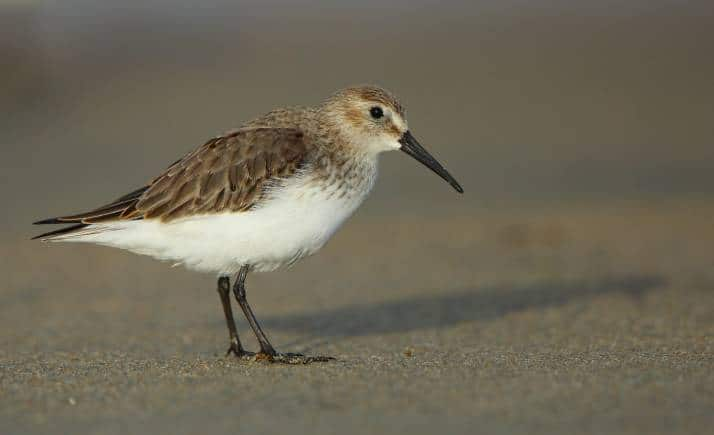 A large number of Arctic-breeding, migratory shorebirds like the Dunlin are classified as High Conservation Priority due to their declining population.
A large number of Arctic-breeding, migratory shorebirds like the Dunlin are classified as High Conservation Priority due to their declining population.The report calls for policy and action to be aligned to highlight species of high conservation priority, address problems of neglected habitats, and promote research and monitoring to arrest declines.
Here are the top 10 takeaways:
1. 178 species are categorised as High Conservation Priority: Of these, 94 species, including the Great White Pelican, Greater Flamingo and Indian Vulture, made the list based on both abundance trends and range. Another 45, including the White-bellied Heron, Brown-winged Kingfisher and Baer’s Pochard, based on their range being very restricted. The last 39, including the Great Indian Bustard, Lesser Florican and Lesser Florican, were included based on a combination of their range and IUCN Red List status.
2. Birds that specialise in any ecosystem suffer steeper declines: Generalist birds that can live in multiple habitat types are doing well as a group and may require less conservation attention. Grassland specialists, however, have declined by more than 50 per cent, indicating the importance of protecting and maintaining grassland ecosystems. Birds that are woodland specialists (forests or plantations) have also declined more than generalists, indicating a need to conserve natural forest habitats.
3. Birds that live in open habitats are severely impacted: Open habitats in India have been severely compromised by the spread of invasive, drought tolerant woody plants, as well as wind turbines and power lines, impacting several bird species. Of particular note is the Great Grey Shrike, which has suffered a worrisome long-term decline of more than 80 per cent. The Rufous-tailed Lark and Common Kestrel are now categorised as species of High Priority. There are exceptions, though. Adaptable birds such as Yellow-billed Babbler and Jerdon’s Bushlark are doing well.
4. Shorebird numbers in key sites show a declining trend: The report shows that a number of once-common species such as the Curlew Sandpiper and Eurasian Curlew are steadily reducing. At the same time, globally threatened species like the Great Knot and Nordmann’s Greenshank are also in strong decline. Their biggest threats: habitat degradation, changes in land use, blocking of river mouths, aquaculture, and non-conventional salt production and illegal killing.
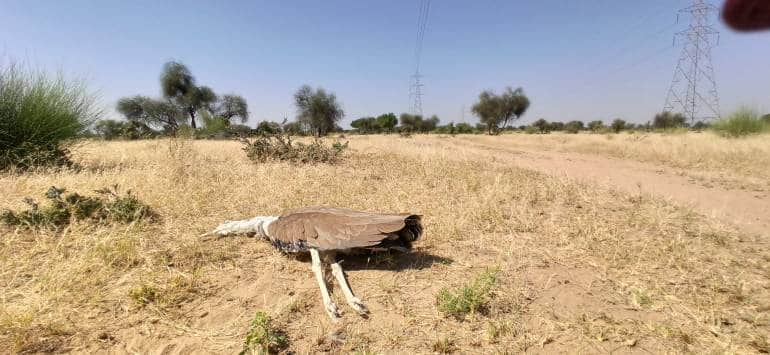 The Great Indian Bustard faces imminent extinction.
The Great Indian Bustard faces imminent extinction.5. Three Indian Bustard species face imminent extinction: Bustards are disproportionately endangered due to their slow life-history traits and specialised ecological needs. While half of all bustards worldwide are threatened, the three species that breed in India - the Great Indian Bustard, Lesser Florican and Bengal Florican - face imminent extinction. Incidentally, the Lesser Florican has been declining more precipitously than the Great Indian Bustard, but has not received the same conservation attention.
6. Migratory birds under greater threat than resident species: Birds face many dangers during migration, from extreme weather events, to predation, starvation, and hunting/illegal killing. Long-distance migrants have declined the most, by over 50 percent, followed by short-distance migrants. Shorebirds that breed in the Arctic have been particularly affected, declining by close to 80 percent as a group. In contrast, resident species as a group have remained much more stable.
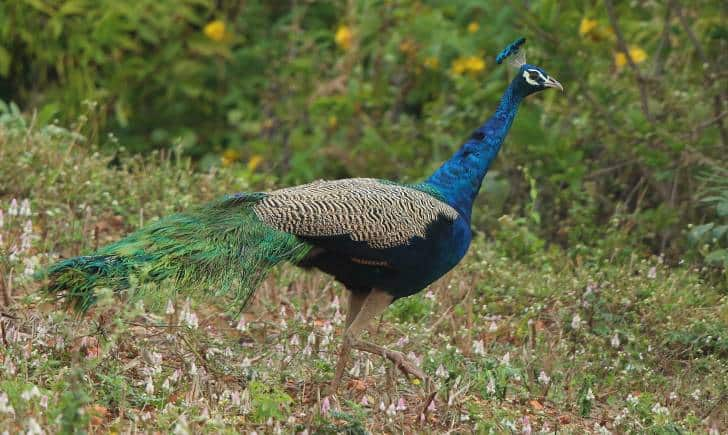 Our national bird, Indian Peafowl, continues to thrive, expanding its range and increasing in numbers in many parts of India. (Photo: Albi)
Our national bird, Indian Peafowl, continues to thrive, expanding its range and increasing in numbers in many parts of India. (Photo: Albi)7. Some species are thriving though: A few adaptable species are living and thriving in human-modified landscapes. Populations of Ashy Prinia, Rock Pigeon, Asian Koel, and Indian Peafowl have increased dramatically. Generalist raptors, such as Shikra and Brahminy Kite, continue to do well today. The Booted Eagle and the Vulnerable Greater Spotted Eagle, both habitat generalists, too, do not show any evidence of decline. And although declining globally due to the pet trade, the Alexandrine Parakeet has established new populations in several Indian cities, expanding its range.
8. Several birds of interest need immediate help: The iconic Sarus Cranes, which is widely believed to pair for life, has rapidly declined over the long term and continues to do so. Similarly, the Forest Wagtail’s numbers are reducing, though the causes of decline are not understood. The Pied Kingfisher, Common Crane, Sirkeer Malkoha, Grey Wagtail and Spot-winged Starling have all shown rapid decline in recent years.
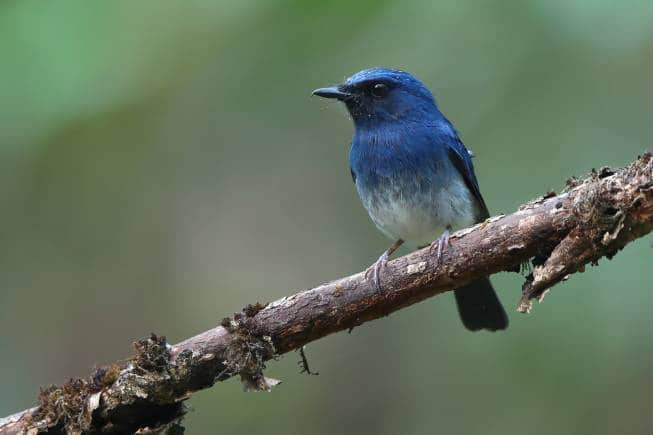 Endemic birds seem to be declining more rapidly than others and the Western Ghat endemic birds are most severely impacted, like this White-bellied blue robin.
Endemic birds seem to be declining more rapidly than others and the Western Ghat endemic birds are most severely impacted, like this White-bellied blue robin.9. Climate change is pushing mountain species directly towards extinction: Terrestrial bird species diversity is concentrated in tropical mountains, with each species adapted to a specific temperature range tied to altitude. The Himalayas and Western Ghats are particularly rich in bird diversity, with the latter being a hub for bird endemism. However, climate change is posing a threat to high-elevation bird species as favourable conditions shrink at mountain summits, potentially causing local extinctions.
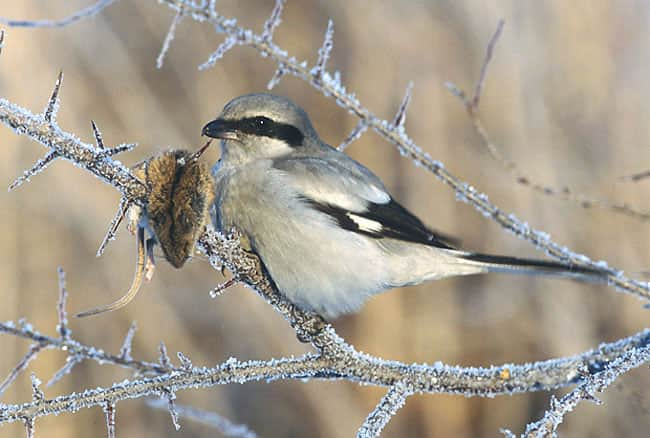 A total of 14 species, including the Great Grey Shrike, that are considered to be of ‘least concern’ globally, were found to be endangered, vulnerable or near-threatened in India.
A total of 14 species, including the Great Grey Shrike, that are considered to be of ‘least concern’ globally, were found to be endangered, vulnerable or near-threatened in India.10. 14 species identified for IUCN reassessment: Every year, BirdLife International and IUCN publish a global Red List, which places species into different categories depending on their estimated risk of extinction. A total of 14 species, including the Indian Roller, Common Teal, and Great Grey Shrike, that are considered to be of ‘least concern’ globally, were found to be endangered, vulnerable or near-threatened in India. These have been recommended for IUCN Red List reassessment.
Discover the latest Business News, Sensex, and Nifty updates. Obtain Personal Finance insights, tax queries, and expert opinions on Moneycontrol or download the Moneycontrol App to stay updated!
Find the best of Al News in one place, specially curated for you every weekend.
Stay on top of the latest tech trends and biggest startup news.